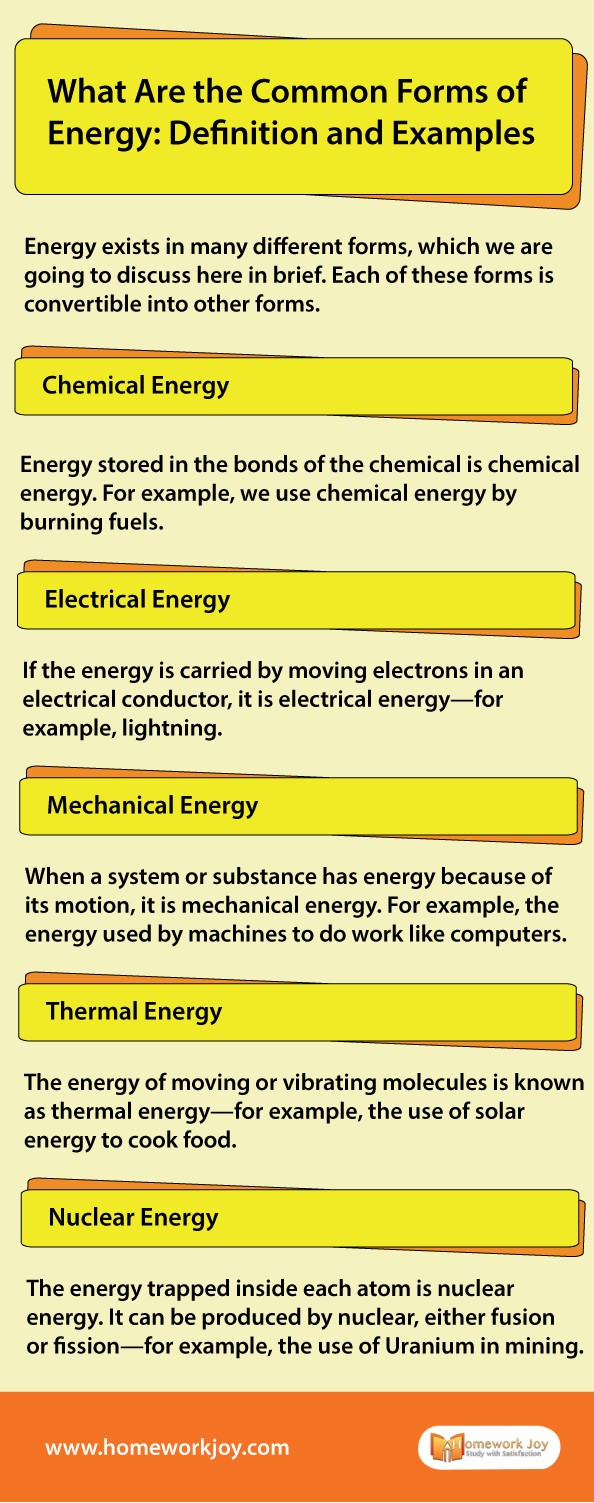Energy exists in many different forms, all of which fall into two primary forms: potential and kinetic energy. Each of these forms is convertible into other forms. But it can’t be destroyed or created. We are going to discuss this here in brief.
Chemical Energy
Energy stored in the bonds of the chemical is chemical energy. This energy holds the particles together. Thus it is the energy stored in food, gasoline, or other chemical combinations. For example, we use chemical energy stored in coals or woods by burning fuels.
Also, read some of our latest posts:
How Many Different Types of Forces Are There in Physics?
Electrical Energy
If the energy is carried by moving electrons in an electrical conductor, it is electrical energy. Electrons that move through a wire create electricity—for example, lightning, which is another example of electricity.
Mechanical Energy
When a system or substance has energy because of its motion, it is mechanical energy. This energy is also known as motion energy. All the objects around us produce this energy. For example, the energy used by machines to do work like computers.
Thermal Energy
The energy of moving or vibrating molecules is known as thermal energy. The faster these molecules, the more energy they possess and the hotter they become—for example, the use of solar energy to cook food.
Nuclear Energy
The energy trapped inside each atom is nuclear energy. It can be produced when nuclei combine (fusion) or split up (fission). This fusion or fission releases a tremendous amount of energy—for example, the use of Uranium in mining to produce electricity.
Sound Energy
When an object moves to vibrate, this energy is produced. Thus it travels out like waves in all directions. But sound needs a medium to travel such that water, wood, air, and even metal—for example, horns of the vehicles, whistles, and musical instruments.
Radiant Energy
Radiant is a combination of heat and light energy. Like sound energy, light energy travels out in all directions in waves—for example, headlights of cars, the light bulb, and glowing coils of a toaster.
Gravitational Energy
This form of energy is the energy held by an object in a gravitational field. For example, water flowing down a waterfall. It is a kind of potential energy associated with the gravitational field. It depends on the mass of the object.
Thus these were some common forms of energy that we experience in our daily life. If you need more physics homework help, you can directly contact highly qualified experts provided by us.
